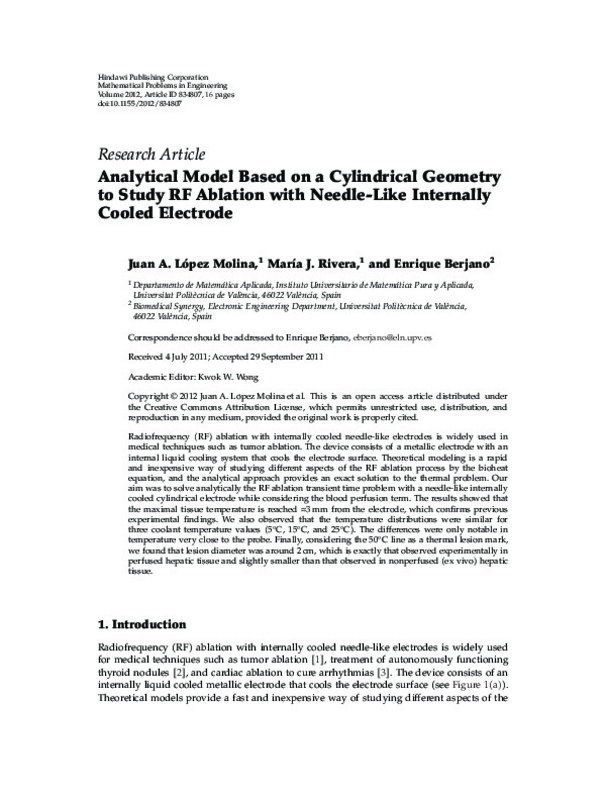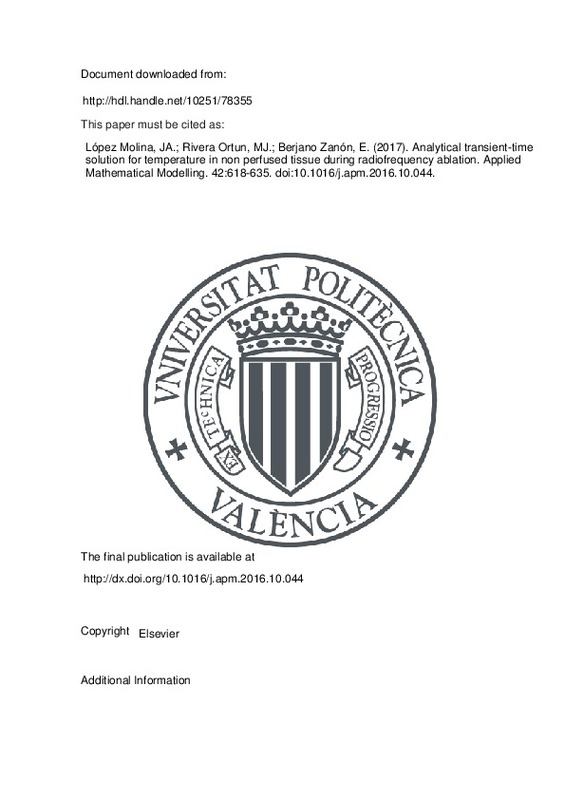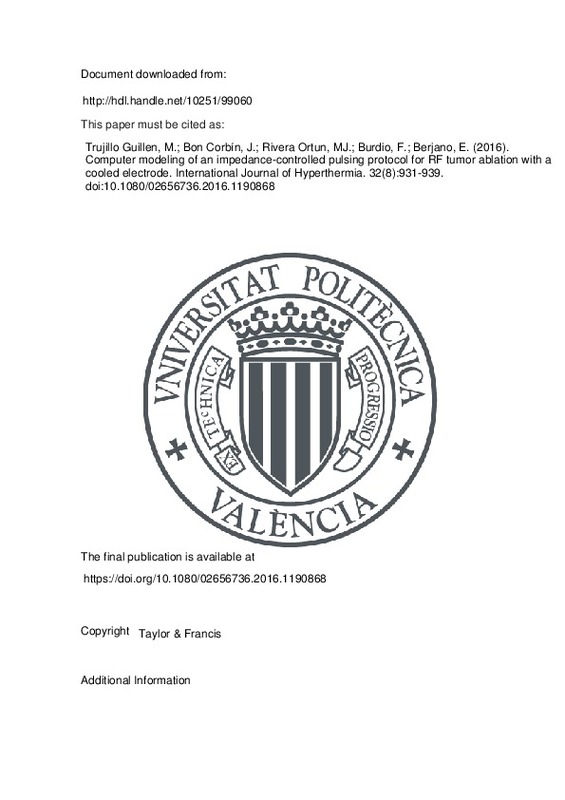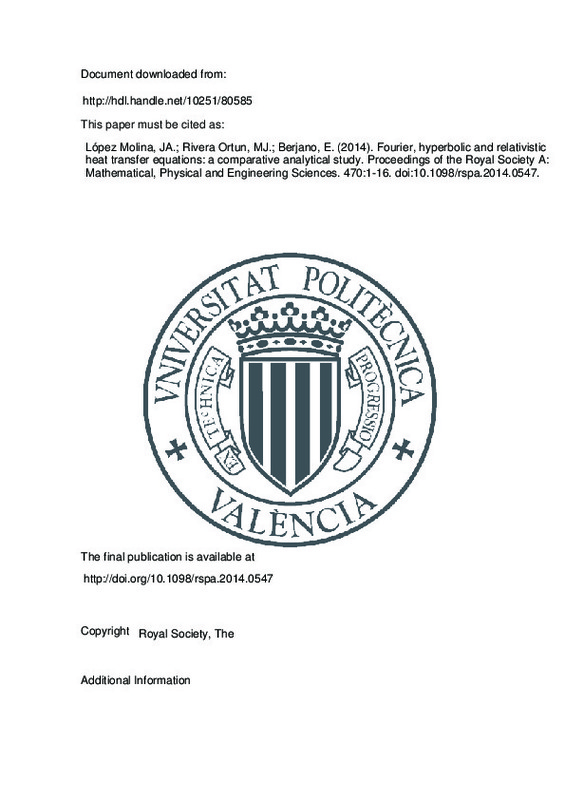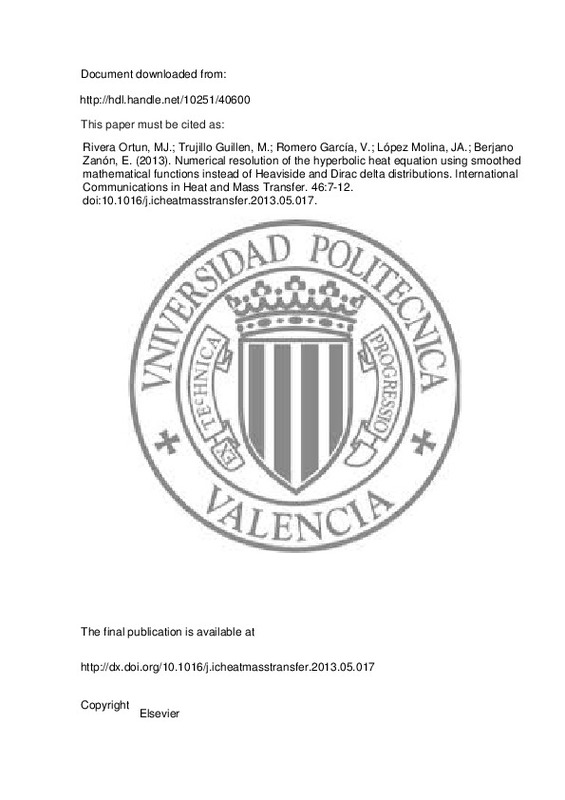

Listar por autor "Rivera Ortun, María José"
RiuNet: Repositorio Institucional de la Universidad Politécnica de Valencia
- RiuNet repositorio UPV
- :
- Listar por autor
JavaScript is disabled for your browser. Some features of this site may not work without it.
Buscar en RiuNet
Listar
Mi cuenta
Ayuda RiuNet
Admin. UPV
Listar por autor "Rivera Ortun, María José"
Mostrando ítems 1-7 de 7
-
López Molina, Juan Antonio; Rivera Ortun, María José; Berjano Zanón, Enrique (Hindawi Publishing Corporation, 2012)Radiofrequency (RF) ablation with internally cooled needle-like electrodes is widely used in medical techniques such as tumor ablation. The device consists of a metallic electrode with an internal liquid cooling system ...
-
López Molina, Juan Antonio; Rivera Ortun, María José; Berjano Zanón, Enrique (Elsevier, 2016-10-26)[EN] Radiofrequency ablation (RFA) with internally cooled needle-like electrodes is a technique widely used to destroy cancer cells. In a previous study we obtained the analytical solution of the biological heat equation ...
-
Trujillo Guillen, Macarena; Bon Corbín, José; Rivera Ortun, María José; Burdio, Fernando; Berjano, Enrique (Taylor & Francis, 2016)[EN] Purpose: To develop computer models to mimic the impedance-controlled pulsing protocol implemented in radiofrequency (RF) generators used for clinical practice of radiofrequency ablation (RFA), and to assess the ...
-
López Molina, Juan Antonio; Rivera Ortun, María José; Berjano, Enrique (American Institute of Mathematical Sciences (AIMS), 2016-04)[EN] It has been suggested that during RF thermal ablation of biological tissue the thermal lesion could reach an equilibrium size after 1-2 minutes. Our objective was to determine under which circumstances of electrode ...
-
López Molina, Juan Antonio; Rivera Ortun, María José; Berjano, Enrique (Royal Society, The, 2014-10-08)[EN] Parabolic heat equation based on Fourier's theory (FHE), and hyperbolic heat equation (HHE), has been used to mathematically model the temperature distributions of biological tissue during thermal ablation. However, ...
-
Rivera Ortun, María José; Trujillo Guillen, Macarena; Romero García, Vicente; López Molina, Juan Antonio; Berjano Zanón, Enrique (Elsevier, 2013-08)The hyperbolic bioheat equation (HBE) has been used to model heating applications involving very short power pulses. This equation includes two mathematical distributions (Heaviside and Delta) which have to be necessarily ...
-
Rivera Ortun, María José (AD Publications, 2016)[EN] The function of Green associated to a linear partial differential operator P(D) in a domain ¿ acting at point x0 of the domain, is a distribution G(x,x0) such that P(D)G(x,x0) = ¿(x¿x0), where ¿is the Dirac¿s delta ...
Mostrando ítems 1-7 de 7

Universitat Politècnica de València. Unidad de Documentación Científica de la Biblioteca (+34) 96 387 70 85 · RiuNet@bib.upv.es


